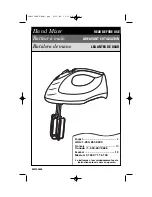
Interconnection-3
Standards Committee (SC-05-05) working on this subject.
He tirelessly tours the world giving seminars and dispens-
ing information on how to successfully hook-up pro audio
equipment
2
. He makes the simple point that it is absurd that
you cannot go out and buy pro audio equipment from sever-
al different manufacturers, buy standard off-the-shelf cable
assemblies, come home, hook it all up and have it work hum
and noise free.
Plug and play.
Sadly, almost never is this the
case, despite the science and rules of noise-free interconnect
known and documented for over
60 years
(see References for
complete information).
It all boils down to using balanced lines, only balanced
lines, and nothing but balanced lines. This is why they were
developed. Further, that
you
tie the shield to the chassis, at
the point it enters the chassis, and at both ends of the cable
(more on ‘both ends’ later).
Since standard XLR cables come with their shields tied to
pin 1 at each end (the shells are not tied, nor need be), this
means equipment using 3-pin, XLR-type connectors
must
tie pin 1 to the chassis
(usually called chassis ground) — not
the audio signal ground as is most common.
Not using
signal ground
is the most radical departure
from common pro-audio practice. Not that there is any ar-
gument about its validity. There isn’t.
This is the right way
to do it
. So why doesn’t audio equipment come wired this
way? Well, some does, and since 1993, more of it does. That’s
when Rane started manufacturing some of its products with
balanced inputs and outputs tying pin 1 to chassis. So why
doesn’t everyone do it this way? Because life is messy, some
things are hard to change, and there will always be equip-
ment in use that was made before proper grounding prac-
tices were in effect.
Unbalanced equipment is another problem: it is ever-
where, easily available and inexpensive. All those RCA and
¼" TS connectors found on consumer equipment; effect-
loops and insert-points on consoles; signal processing boxes;
semi-pro digital and analog tape recorders; computer cards;
mixing consoles; et cetera.
The next several pages give tips on how to successfully
address hooking up unbalanced equipment. Unbalanced
equipment when “blindly” connected with fully balanced
units starts a pattern of hum and undesirable operation,
requiring extra measures to correct the situation.
Figure 1b. Recommmended practice.
CASE
(+)
(–)
COMMON (WRONG) PRACTICE
RECOMMENDED PRACTICE
(–)
(+)
OPTIONAL
CASE
1
2
3
3
1
2
CHASSIS
GROUND
SIGNAL
GROUND
CHASSIS
GROUND
CHASSIS
GROUND
The Next Best Right Way To Do It
The quickest, quietest and most foolproof method to con-
nect balanced and unbalanced is to
transformer isolate all
unbalanced connections
. See Figure 2.
Many manufacturers provide several tools for this task,
including Rane. Consult your audio dealer to explore the
options available.
The goal of these adaptors is to allow the use of
standard
cables.
With these transformer isolation boxes, modification
of cable assemblies is unnecessary. Virtually any two pieces
of audio equipment can be successfully interfaced without
risk of unwanted hum and noise.
Another way to create the necessary isolation is to use a
direct box.
Originally named for its use to convert the high
impedance, high level output of an electric guitar to the low
impedance, low level input of a recording console, it allowed
the player to plug “directly” into the console. Now this term
is commonly used to describe any box used to convert un-
balanced lines to balanced lines.
The Last Best Right Way To Do It
If transformer isolation is not an option, special cable
assemblies are a last resort.
The key here is to prevent the
shield currents from flowing into a unit whose grounding
scheme creates ground loops (hum) in the audio path (i.e.,
most audio equipment).
It is true that connecting both ends of the shield is theo-
retically the best way to interconnect equipment –though
this assumes the interconnected equipment is internally
grounded properly. Since most equipment is
not
internally
grounded properly, connecting both ends of the shield is
not often practiced, since doing so usually creates noisy
interconnections.
A common solution to these noisy hum and buzz prob-
lems involves disconnecting one end of the shield, even
though one can not buy off-the-shelf cables with the shield
disconnected at one end. The best end to disconnect is the
receiving end. If one end of the shield is disconnected, the
noisy hum current stops flowing and away goes the hum
— but only at low frequencies. A ground-sending-end-only
shield connection minimizes the possibility of high fre-
quency (radio) interference since it prevents the shield from
acting as an antenna to the next input. Many reduce this
potential RF interference by providing an RF path through
Figure 2. Transformer Isolation
NOT CONNECTED
AT CHASSIS
(PLASTIC JACK)
EARTH GROUNDED
METAL ENCLOSURE
CHASSIS IS
GROUNDED TO PIN 1
1/4”
TIP-SLEEVE
CASE LUG MAY
CONNECT TO
CHASSIS
(NOT REQUIRED)
TRANSFORMER
UNBALANCED
BALANCED
3
1
2
Summary of Contents for SM 26S
Page 4: ......










































